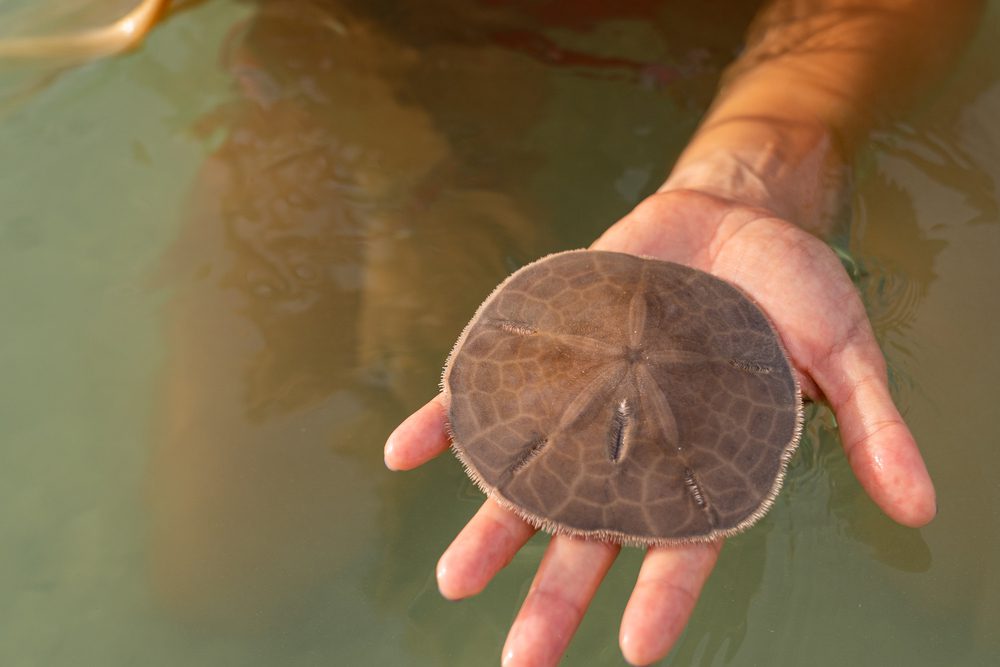If you’ve ever combed the beach to find things to decorate a sandcastle, chances are you’ve probably come across a sand dollar. While most people could be forgiven for thinking it’s just another pretty shell, the reality is quite different.
What are sand dollars?
Sand dollars are actually living organisms, sea urchins that belong to the order Clypeasteroida. They are also in the phylum Echinodermata, meaning they are distantly related to other cool sea creatures like starfish and sea cucumbers. Their skeletons are not shells but are in fact “tests” since they are covered in skin. They often wash up on the beach, and it’s important to know if you’re handling a living organism or a skeleton.
Known for their five-point radial symmetry, the exoskeleton of a dead sand dollar is usually white with a distinctive shape that resembles the petals of a flower. However live sand dollars can be gray or purple and are covered in lots of densely packed tiny spines. If you end up holding one, you can even feel the spines and hairs moving.

A living sand dollar. Image credit: WeStaySocial/Shutterstock
Found on the sea floor in the Northern Hemisphere, these creatures use their spines and tiny hairs called cilia to move food particles into their mouth on the underside of their bodies. Their mouths are sometimes referred to as Aristotle’s Lantern and contain five sharp teeth-like structures. Their spines can also help them move around the ocean floor to stay hidden from predators such as cod, haddock, eels, and even octopuses.
Living sand dollars are often found together on the seafloor, where they can burrow into the sand and be in close proximity for reproduction by spawning, where gametes are released into the water column.
What to do if you find a live sand dollar?
If you find a living sand dollar on the beach, the best thing to do is place it gently back into the sea as it will not survive out of the water for very long. Some sand dollars can produce a yellow substance known as echinochrome, which is harmless to people but may leave your hands yellowed if you lift a living sand dollar.
If you find the bony skeleton it might make a nice addition to your sandcastle. While removing a living sand dollar from the beach is against the law in some US states. Sand dollar tests are sources of calcium carbonate and it is best to leave it on the beach after you’re done building.
Source Link: What Are Sand Dollars And Why Should You Leave Them On The Beach?